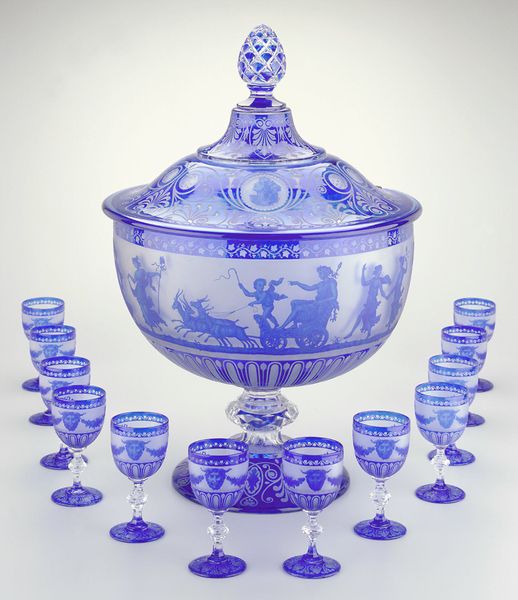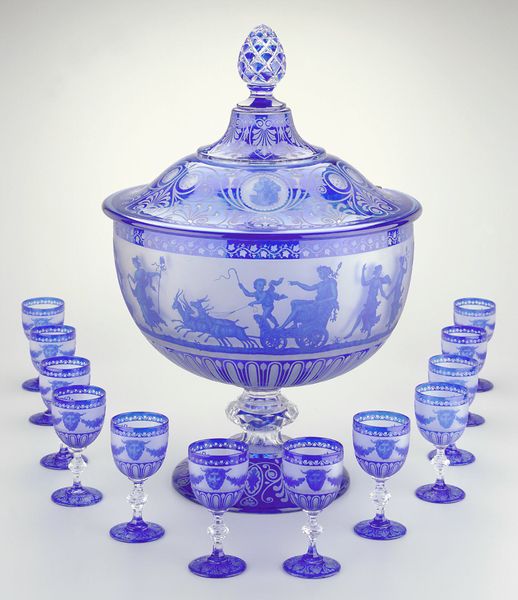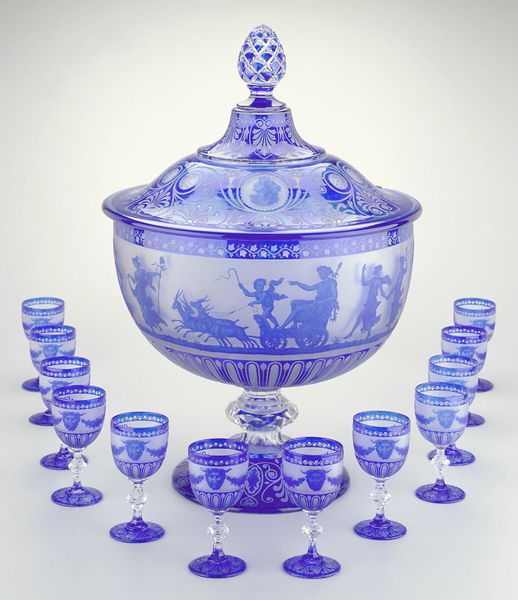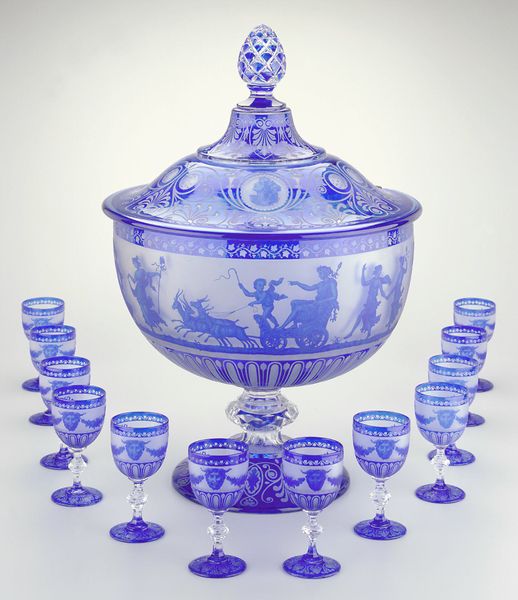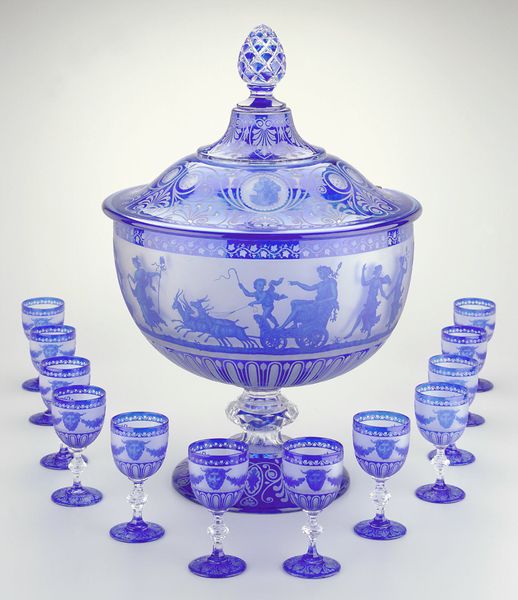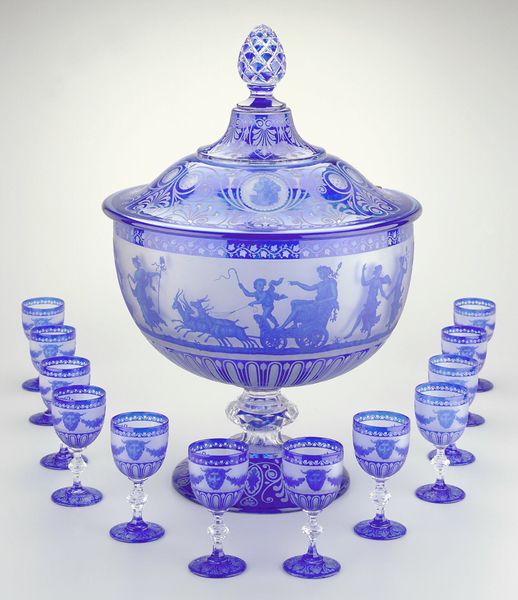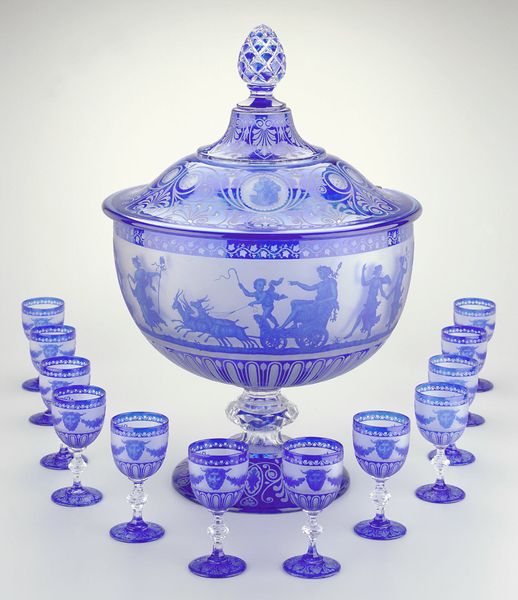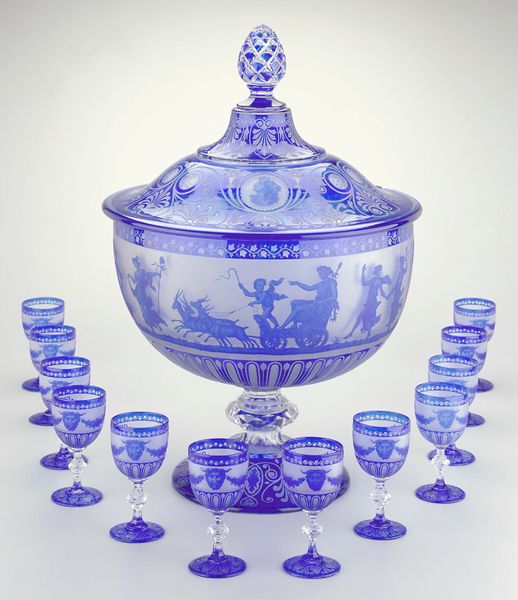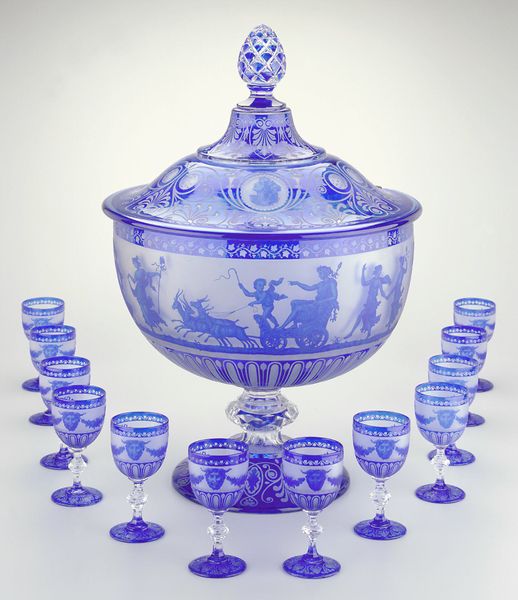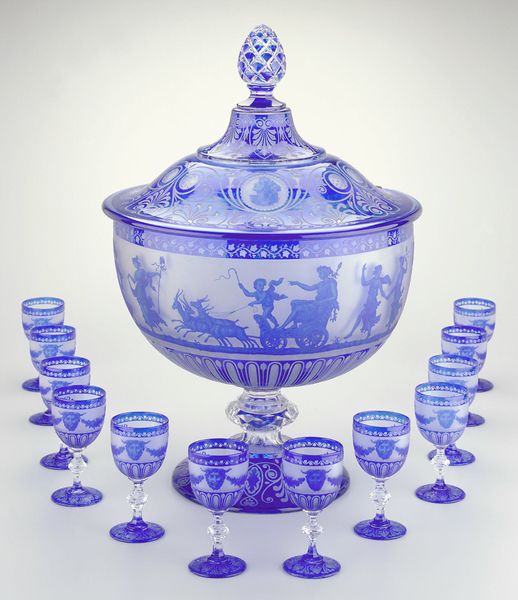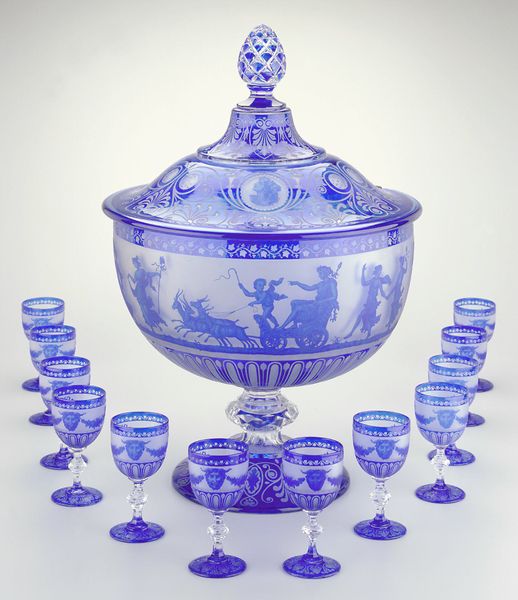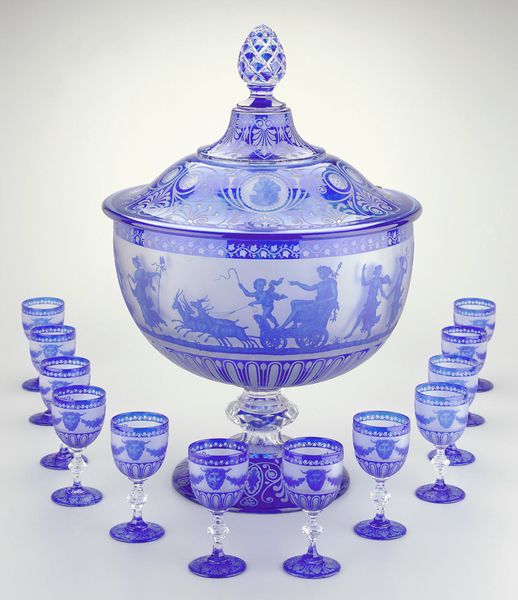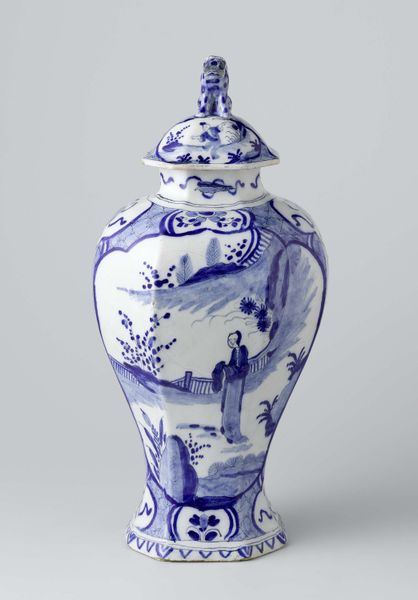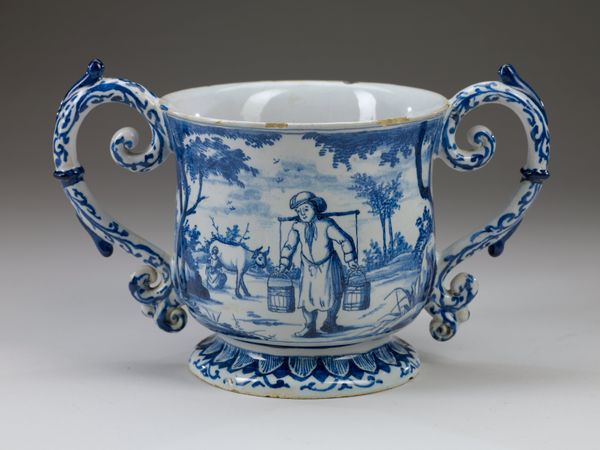
Dimensions: 4 3/4 x 2 7/16 in. (12.07 x 6.19 cm)
Copyright: Public Domain
Curator: Immediately, I'm struck by the elegant, almost austere blue hue and the crisp lines of the Neoclassical figures. Editor: Yes, the “Punch Goblet," made in 1867 by Cristalleries de Baccarat, showcases that era’s fascination with classical antiquity. The set, made entirely of glass, resides here at the Minneapolis Institute of Art. Curator: It feels almost… icy, doesn’t it? I wonder about the manufacturing process involved in creating this. Glassblowing, engraving… each step demanding such precision and expertise. Consider the working conditions, the artisanal knowledge passed down… it speaks to the material culture of 19th-century France. Editor: Absolutely, and let's think about the social function. These elaborate vessels weren't just objects; they were status symbols, reflecting the affluence and aspirations of the upper classes. Picture a lavish party, the room lit by gaslight, and this set acting as a centerpiece, reinforcing societal hierarchies through the very act of consumption. The historical narrative painted on it, adding another layer of refinement. Curator: And think about the labour invested. Glass of this clarity and delicacy isn't just conjured. It’s extracted, blown, shaped, and engraved, with the social reality being someone at the bottom has labored to make such a beauty to be consumed at the top. The glass, the imagery – even the way the set is designed encourages this. Editor: Indeed. Furthermore, its survival and present location tell us a great deal about art collecting and the values assigned to objects by museums across centuries. The story of how a French aristocratic object ended up in the Midwest deserves investigation. Who owned it? What collection was it part of before? Curator: It shifts one's understanding of it being merely decorative. Every element underscores the social context of its creation and use. It highlights how our tastes and lifestyles rely so much on material extraction and production, both visible and invisible. Editor: Agreed. Examining pieces like this allows us to really consider how museums act as vessels—preserving history while also constructing narratives about class, culture, and power. Curator: I leave now thinking less of delicate craftsmanship, and more about social relationships. Editor: As I do about how artifacts gather new stories, reflecting changes over time.
Comments
No comments
Be the first to comment and join the conversation on the ultimate creative platform.
